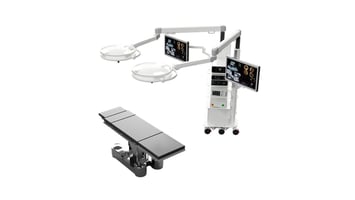Ambulatory Healthcare Design Lab (AHD*lab) seeks to explore innovations in healthcare design and...
Future-Proofing Your ASC: 7 Essential Recommendations
In the ever-evolving landscape of healthcare, ensuring that your ASC remains adaptable and ready for future growth is critical. While predicting the exact trajectory of your center may be challenging, strategic planning can help you future-proof your investment, ensuring it can handle increased volume, accommodate new specialties, and expand seamlessly. Here are seven important recommendations to consider when planning your ASC:
1. Plan for Expansion: When planning for your new facility, it is crucial to secure adequate space that will account for current and future needs. That may include the ability to expand the program, such as adding an OR, within the existing footprint, or the potential to expand into an adjacent space. In the case of new construction, the building and site should be planned to allow for future additions, should the need arise.
2. Right-Size Services: When it comes to essential services like electrical, water, and sanitation, it's more cost-effective and less disruptive to size them to accommodate your future program from the outset. Avoid the headache of retrofitting these services later on.
3. Building Systems: Ensure that your facility systems—such as the generator, HVAC, and medical gas systems—have the necessary capacity to support future additions. Though increasing equipment size during the initial design phase may modestly impact construction costs, it is usually a far more economical choice than replacing these systems down the road.
4. Surgical Specialties: If you plan to introduce new surgical specialties in the future, it is essential to factor in their unique requirements during the facility's design phase. Ensure that your operating rooms are spacious enough to accommodate the added equipment and personnel if you plan to add specialties such as orthopedics or spine. Likewise, verify that pre-op and recovery areas are equipped to meet the anticipated specialties' throughput needs. And, make sure your waiting room can comfortably accommodate an increased number of patients.
5. Scalable Sterile Processing: As you add more ORs or increase surgical volume, make sure your sterile processing area has room for expansion. Ensure utility tie-ins are in place to support additional washing and sterilization equipment, ensuring efficient and cost-effective scaling.
6. Adaptable Staff and Support Spaces: Anticipate a growing team by designing staff spaces, including locker rooms and breakrooms, with the capacity to accommodate more personnel. Incorporate adequate storage for equipment and supplies as your ASC expands.
7. Modular Interior Construction: Consider modular interior construction options, such as wall and casework systems offered by companies like DIRTT. This innovative approach enables more straightforward space reconfiguration and expansion, allowing your ASC to adapt rapidly to changing needs.
In the dynamic world of healthcare, the ability to anticipate and prepare for the future is essential. These recommendations will help you create a flexible and adaptable ASC that can thrive in an ever-changing environment, providing the highest level of care to your patients while ensuring the long-term success of your facility. Future-proofing your ASC is not just a wise investment—it's a commitment to delivering excellence in healthcare.






